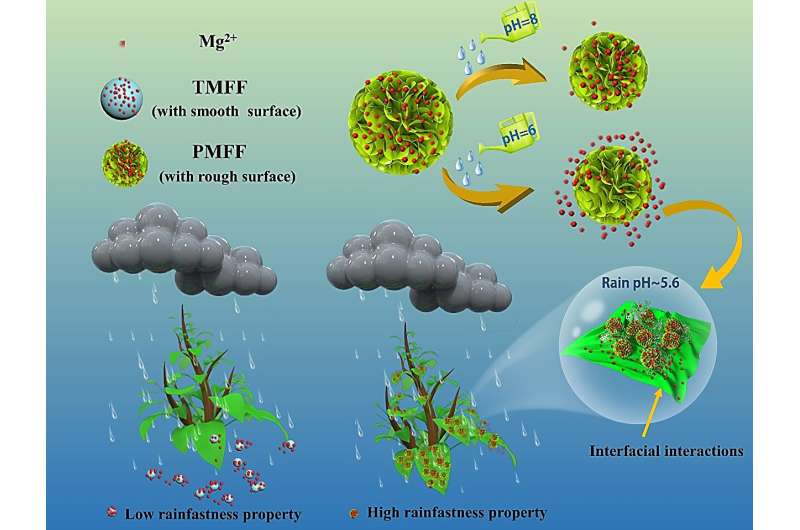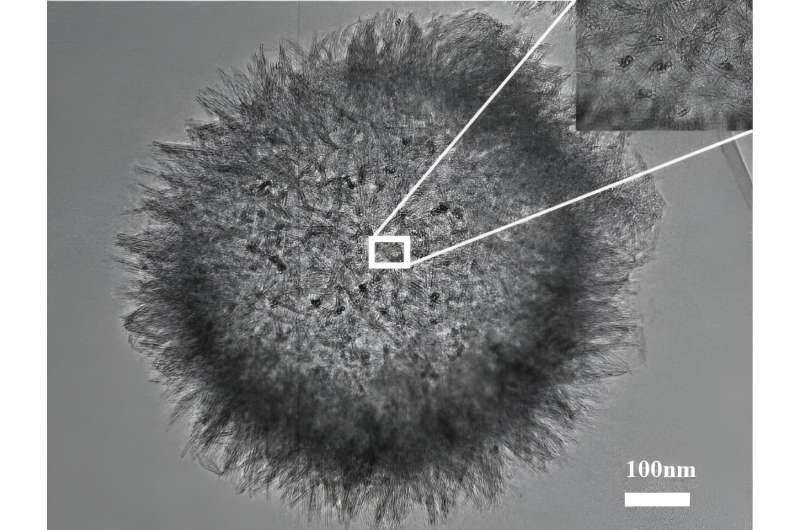A team led by Prof. Wang Guozhong and Zhou Hongjian from the Institute of Solid State Physics (ISSP), Hefei Institutes of Physical Science (HFIPS) of the Chinese Academy of Sciences (CAS) has successfully utilized surface roughness engineering of silicon-based nanomaterials to achieve efficient delivery of essential nutrients to crop leaves.
Their findings, published in ACS Nano, reveal a new strategy for maximizing nutrient absorption in crops.
Conventional soil fertilization involves applying nutrients to the soil, whereas foliar fertilization allows nutrients to be sprayed directly onto crop leaf surfaces. This enables the nutrients to participate directly in crop metabolism and organic matter synthesis. However, due to the lotus leaf effect on crop leaves, foliar nutrients often slip off during spraying or get washed away by rain, ending up in the environment. Therefore, a solution was needed to develop a fertilizer technology that can adhere efficiently to hydrophobic leaf surfaces.
In this study, the researchers addressed the instability of certain fertilizers during application, such as the oxidization of ferrous element Fe(II) to Fe(III), which plants struggle to absorb. They developed a pH-controlled oxidation-resistant ferrous foliar fertilizer (ORFFF) delivery system using environmentally friendly silicon-based micro/nanomaterials as carriers.
By incorporating vitamin C as an in-situ antioxidant, the system alleviates iron deficiency in crops and enhances crop yield. The unique hollow structure and dense cross-layered nanosheets of the ORFFF enable it to possess excellent ferrous antioxidant capacity, high foliar adhesion efficiency, slow-release nutrient ability, and exceptional rainfastness on plant leaves.

In previous years, the team employed surface roughness engineering with nano-silica to create three new types of foliar nitrogen fertilizers with different surface shapes: solid, hollow, and sea urchin-shaped. Compared to typical foliar nitrogen fertilizers, these nanostructured fertilizers exhibited significantly higher adhesion on peanut and maize leaves, with adhesion abilities 5.9 times and 2.2 times greater, respectively.
Corn seedlings treated with the nanostructured fertilizers showed a 2.3 times improvement in nitrogen utilization. The micro-nano structure and high surface roughness of the carriers optimize their qualities and enhance fertilizer wettability and adherence to crop leaves.
In addition, to address magnesium deficiency in modern agriculture, the researchers also developed a foliar magnesium fertilizer called pompon-like magnesium foliar fertilizer (PMFF). Using an ammonia-assisted sacrificial nano silica template, they constructed the nutrient element magnesium directly on the nano silica template.
The release of magnesium from PMFF could be controlled by adjusting the pH of the solution during fertilization to meet the magnesium demands at different stages of crop growth. Tomato seedlings treated with PMFF demonstrated a magnesium consumption rate 9.0 times higher than that of standard foliar magnesium fertilizers.
These innovative findings offer a viable approach for utilizing intelligent engineered nanomaterials to facilitate the effective delivery of nano-agricultural fertilizers, providing new possibilities for enhancing crop nutrition and productivity.


